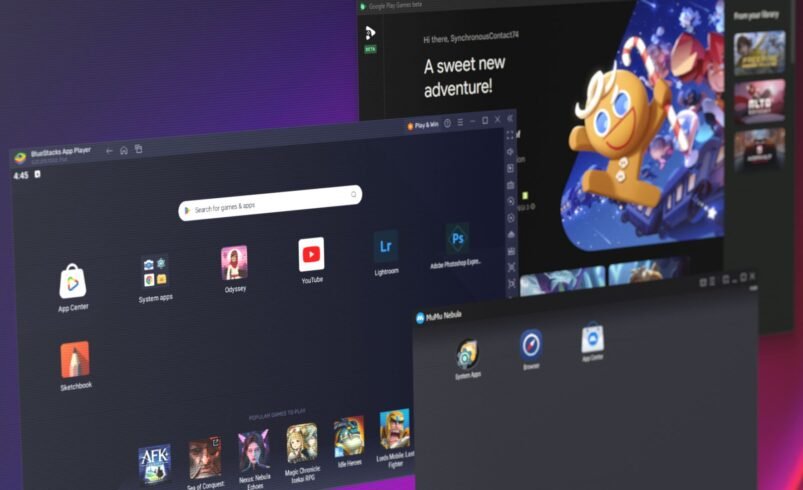WebDriver Architecture Deep Dive: Implementation Patterns for Complex Testing Scenarios

When it comes to automation testing for web apps, a few frameworks in the market, like Selenium, Puppeteer, Cypress, Playwright, etc., make it to the ‘favored list’ of top automation frameworks. The choice of test automation framework counts on various parameters like language support, complexity, and scale, along with the framework expertise available within the testing team. But this doesn’t mean Selenium is no longer the preferred framework among automation testers and developers. Testing the web app against obstacles is complex, and we require a tool. Selenium WebDriver is a very popular automation tool mostly used by test automation engineers and developers. You have come to the right place if you want to learn about Selenium Architecture internally.
In this blog on Selenium Architecture, I will go into detail regarding Selenium Architecture and also look at what is Selenium WebDriver; we will look at the workings of Selenium WebDriver, its advantages, and limitations.
What is Selenium?
Selenium is a powerful automation testing framework designed to streamline web application testing across multiple browsers. It enables testers and developers to create automation scripts effortlessly using various programming languages, including Java, Ruby, NodeJS, Python, C#, PHP, and Perl.
Selenium is designed to support cross-browser testing on the most popular web browsers, including Google Chrome, Apple Safari, Mozilla Firefox, Microsoft Edge, and Opera. Also, enables cross-platform testing by enabling test cases to run across different operating systems such as Windows, Linux, macOS, and Solaris.
Selenium is widely recognized for being among the best automation testing tools. It allows developers and automation testers to create scalable, reliable, and even efficient test cases, making it a perfect addition to software testing in modern scenarios.
To know more about Selenium, we recommend checking this guide on what is Selenium.
What is Selenium WebDriver?
Selenium WebDriver is one of the most important components of the entire Selenium framework that supports overall browser-based automation tests.
WebDriver is the remote control interface component that allows test programs to instruct and interact with browsers, manipulate DOM elements in a web page, and control the user agent’s behavior. It bridges the Selenium framework and the browser over which the test cases run.
After Selenium 1, Selenium RC was merged with the Selenium WebDriver and formed Selenium 2. This was later upgraded to Selenium 3 and further to Selenium 4.
How does Selenium WebDriver work internally?
In a real-time scenario, when we run a Selenium script written in any language using any one of the supported Selenium client libraries (say Java), the browser will launch and start behaving as directed by the script. Now let’s understand what is occurring internally after the Run button is clicked till the launch of the real browser.
1. As we click on the Run button, the Selenium client library runs Selenium commands from the automation script. It converts them in a serialized JSON format (for example, https://www.lambdatest.com will be serialized to {“URL”: “https://www.lambdatest.com”} )using JSON Wire protocol over HTTP sent to the browser driver (say ChromeDriver) for each command. Every browser driver uses the HTTP server to receive an HTTP request.
2. JSON Wire Protocol is responsible for communicating between any client and the server by sharing the data. The browser driver receives the HTTP request via the HTTP Server. This HTTP Server performs all the typical actions or instructions on the browser driver and then the browser driver will send a request to load the URL on the real browser.
3. After performing all instructions and commands, the execution status is sent back to the HTTP Server over the HTTP. The browser driver furthermore uses the HTTP server to receive the HTTP request and then send it back to the client library via the JSON Wire Protocol.
In Selenium 4.0, the role of JSON Wire protocol is completely removed. The browser driver directly communicates with the Selenium client libraries to execute various Selenium commands on the real browser.
Modern test automation demands a robust WebDriver architecture to handle complex scenarios efficiently. LambdaTest is an AI-powered test execution that enhances WebDriver-based testing by providing a scalable cloud infrastructure for running Selenium tests across real browsers and devices.
With parallel execution, network throttling, geolocation testing, and built-in debugging tools, LambdaTest optimizes WebDriver workflows, reducing test execution time and improving reliability.
Implementation Patterns for Complex Testing
When tackling complex testing scenarios, using the right implementation patterns can make all the difference. A solid approach combines modular test design, data-driven testing, and smart synchronization techniques to handle dynamic elements efficiently.
Let’s have a look into some of the implementation patterns for complex testing:
1. Page Object Model (POM)
The Page Object Model (POM) is a design pattern in Selenium WebDriver that promotes the maintainability, reusability, and readability of test scripts. It structures test automation code by separating the UI elements (locators) and interaction methods from actual test scripts.
Instead of writing test scripts with direct element locators scattered throughout, POM encapsulates page elements within dedicated Page Classes. Each web page (or a significant part of it) gets its own class, which exposes actions users can perform on that page.
Why Use POM?
As test automation projects grow, managing locators and interaction logic across multiple test cases becomes challenging. POM solves this problem by:
- Enhancing Maintainability: If a UI element changes, only the corresponding page class needs an update, not multiple test scripts.
- Improving Code Readability: Test scripts become cleaner and easier to understand as they focus only on the test logic rather than UI element interactions.
- Encouraging Reusability: Common actions (like login, form submission, and navigation) can be reused across multiple test cases.
- Reducing Code Duplication: Page objects eliminate repetitive locators and interaction code, leading to a more structured and efficient test framework.
2. Fluent Interface Pattern
The Fluent Interface Pattern in Selenium WebDriver enhances code readability and simplifies test automation by allowing method chaining. Instead of writing step-by-step interactions in separate lines, Fluent Interface enables a more natural and expressive syntax, making test scripts more intuitive.
Why Use Fluent Interface in Selenium?
- Improves Readability: Tests read like a natural sequence of actions.
- Enhances Maintainability: Reduces redundant code and makes changes more manageable.
- Supports Method Chaining: Allows smooth execution of multiple actions in a single statement.
3. Factory Pattern for WebDriver Instances
The Factory Pattern in Selenium WebDriver is a design approach used to manage WebDriver instances efficiently. Instead of manually initializing WebDriver for each test, the Factory Pattern provides a centralized way to dynamically create and manage browser instances based on test requirements.
Why Use the Factory Pattern?
- Encapsulates WebDriver Initialization: Eliminates redundant setup code.
- Supports Multiple Browsers: Easily switch between Chrome, Firefox, Edge, etc.
- Enhances Maintainability: Centralized configuration makes updates easier.
4. Singleton Pattern for WebDriver
The Singleton Pattern in Selenium WebDriver ensures that only one instance of WebDriver is created and shared across test cases. This prevents unnecessary browser sessions, optimizes resource usage, and avoids session conflicts in parallel execution.
Why Use Singleton for WebDriver?
- Prevents Multiple Instantiations: Ensures a single, reusable WebDriver instance.
- Improves Performance: Reduces memory consumption by avoiding redundant browser launches.
- Enhances Test Stability: Minimizes WebDriver-related failures in test execution.
Wrapping Up
Diving deep into WebDriver architecture and exploring implementation patterns unlocks the true potential of test automation. By leveraging design patterns like Page Object Model (POM), Fluent Interface, Factory, Singleton, and Decorator, testers can build scalable, maintainable, and efficient automation frameworks.
Beyond just writing test scripts, understanding Selenium Grid, parallel execution, and handling dynamic elements ensures robust test coverage across diverse environments. As modern applications evolve, optimized WebDriver implementation is key to delivering high-quality software faster.



